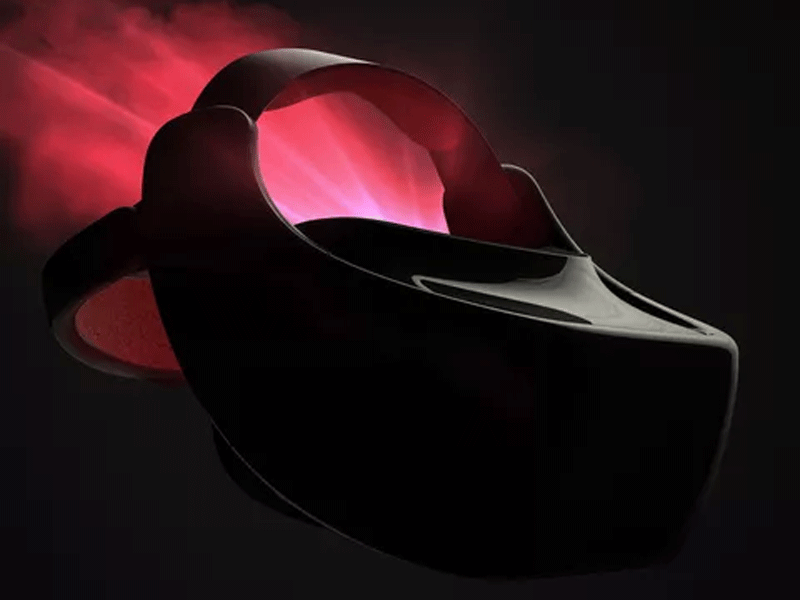 EMERGING TECH
EMERGING TECH
 EMERGING TECH
EMERGING TECH
 EMERGING TECH
EMERGING TECH
Smartphone and virtual reality hardware maker HTC Corp. announced Monday the upcoming release of the Vive Focus, its standalone virtual reality head-mounted display that does not require a wired connection to a computer.
The company also announced Vive Wave, a VR open platform and tools for software and hardware developers designed to provide an easy path for the production of mobile VR content for high-performance devices.
With this announcement, HTC Vive has put all of its attention onto the Chinese market with the Focus and the Wave platform. As such, the company has canceled its partnership with Google LLC to develop a Daydream-branded HTC standalone headset, which would have come to the U.S. market, Google VR chief Clay Bavor confirmed in a tweet late Monday.
Google had announced at the Google I/O conference in May that HTC headsets for the U.S. market would use the Daydream tracking platform. First news of the Chinese version of HTC’s standalone headset arrived in July, with indications it would use Qualcomm’s tracking tech instead. Now HTC has cut the cord with Google and the U.S. market.
The Vive Focus is a headset designed for mass market appeal and offers enhanced comfort for extended use, easy on-off capabilities. The Focus is also the first commercial device to offer what HTC calls “world scale” capability with inside-out six-degrees-of-freedom tracking – this is the ability to track head movement as well as body movement in the physical world.
In addition to providing 6DoF, the Vive Focus is not tethered to a computer, as a result, wearers will have increased mobility with the headset on. HTC is hoping that having the ability to get up and walk away from a computer without getting yanked back or tangled up in wires will enable deeper and more immersive VR experiences.
“With the new Vive Focus, we are excited to bring high-quality 6DoF VR experiences, which were previously only available on tethered devices, in a more convenient and portable form factor,” said Alvin Wang Graylin, China regional president of HTC Vive.
As a standalone device, the Vive Focus will fill in a role between mobile VR headsets, such as the Google Daydream and Samsung Gear VR, and tethered headsets, including the Oculus Rift and HTC Vive. The VR industry has been leaning towards standalone headsets for the past month with Oculus recently announcing the Go with a price tag of $199. Google also has a standalone headset upcoming from its Daydream line, although now without the addition of an HTC offering.
Hardware makers adding new roles into the VR market are working into a market with falling prices. This year, Oculus cut the price of its Oculus Rift VR headset to $399 from $798 and HTC Vive followed suit bringing the price of its headset to $599 from $799. Standalone headsets may prove to be even cheaper, as low as $200 for the Go, and thus bring greater mass market attention.
The Vive Focus comes with a high-resolution active-matrix organic light-emitting diode screen driven by a Qualcomm Snapdragon 835 VR Platform chip and will be built on the newly announced Vive Wave VR open platform. Smartphones that use AMOLED screens include Google’s Pixel 2 and the Samsung S8, both of which can be used for screens in mobile VR headsets.
The headset will also benefit from access to a huge library of VR content through HTC’s Viveport distribution portal.
The Vive Wave VR software development kit is currently generally available to developers and VR content creators. It is an open interface that is designed to allow interoperability between numerous mobile headsets and accessories. HTC is hoping that with Vive Wave standardizing hardware and development for Vive products, it will allow for easier porting of VR content and apps between different devices and thus less tension for developers.
“As the VR industry leader in China, it is our duty to help reduce market fragmentation and provide content developers with more ways to make money,” said Graylin. “Vive Wave will assure a higher consistency in the user experience on a variety of mobile VR devices.”
HTC also announced 12 hardware partners — namely 360QIKU, Baofengmojing, Coocaa, EmdoorVR, Idealens, iQIYI, Juhaokan, Nubia, Pico, Pimax, Quanta and Thundercomm – who have signed on to support the implementation of the Vive Wave SDK and platform.
HTC Vive also announced a partnership with VR development platform Unity Technologies to enable one-click publishing of VR content through Viveport for both PC and mobile developers. Unity will now integrate with Viveport and provide a more intuitive way for Unity developers to use the new Vive Wave VR SDK.
Unity will also now be able to use Vive’s in-app payment and VR advertisement functions, with an initial focus on the Chinese market, thus opening up revenue for VR developers and content creators.
Support our mission to keep content open and free by engaging with theCUBE community. Join theCUBE’s Alumni Trust Network, where technology leaders connect, share intelligence and create opportunities.
Founded by tech visionaries John Furrier and Dave Vellante, SiliconANGLE Media has built a dynamic ecosystem of industry-leading digital media brands that reach 15+ million elite tech professionals. Our new proprietary theCUBE AI Video Cloud is breaking ground in audience interaction, leveraging theCUBEai.com neural network to help technology companies make data-driven decisions and stay at the forefront of industry conversations.